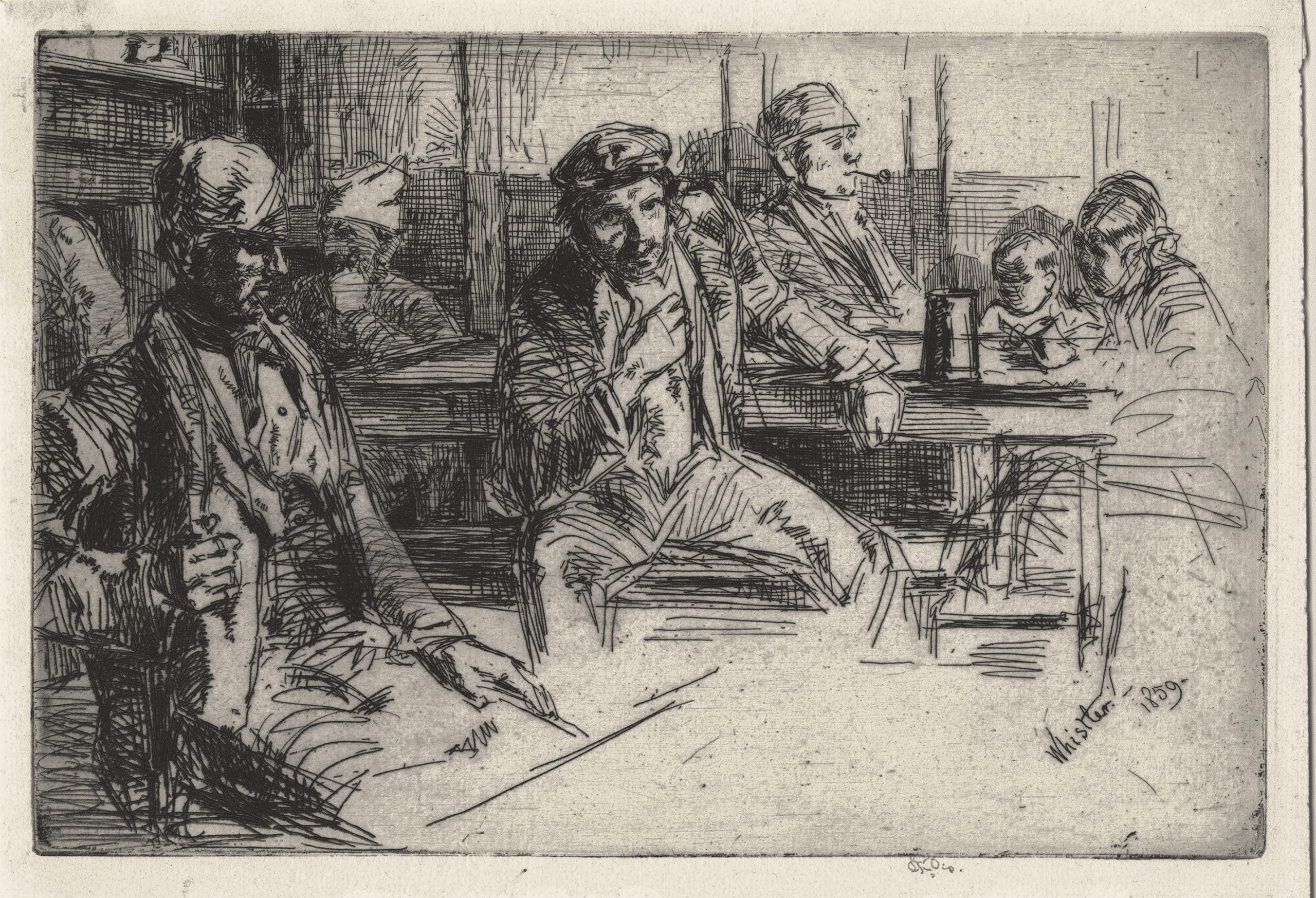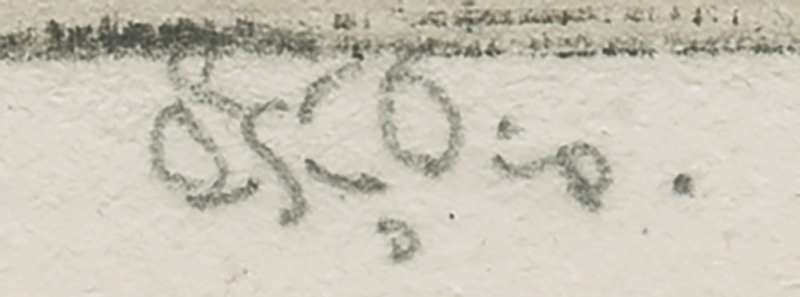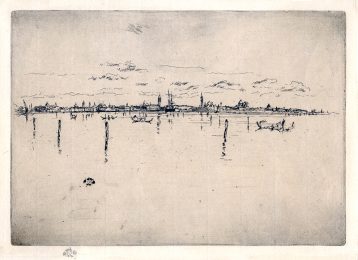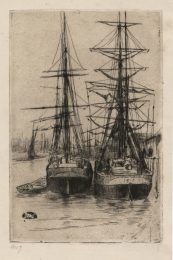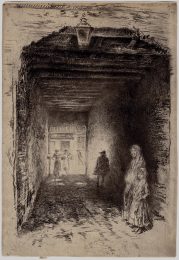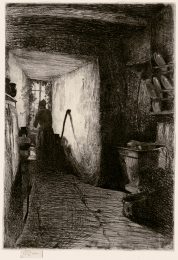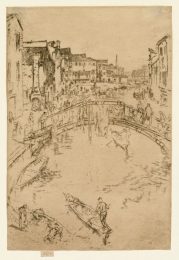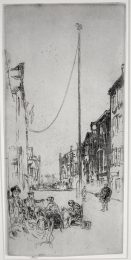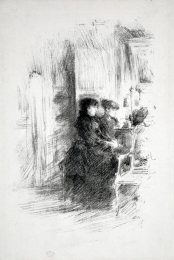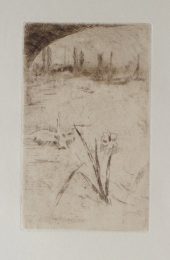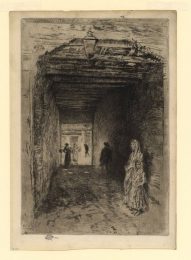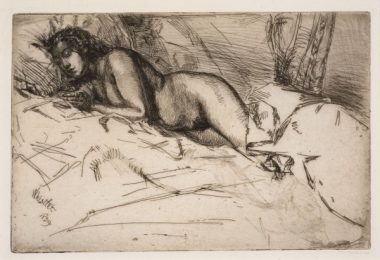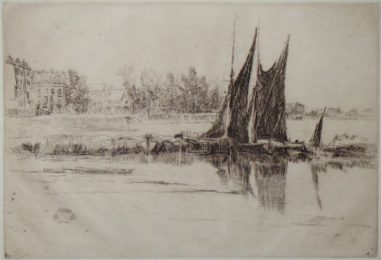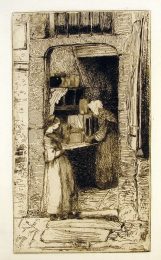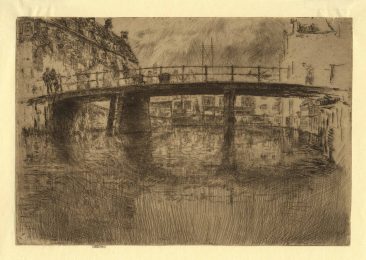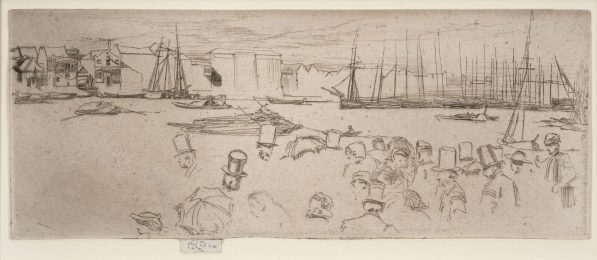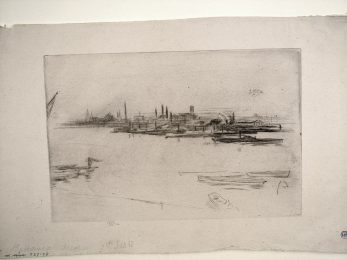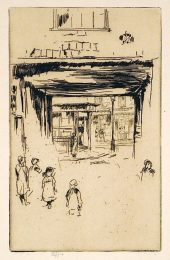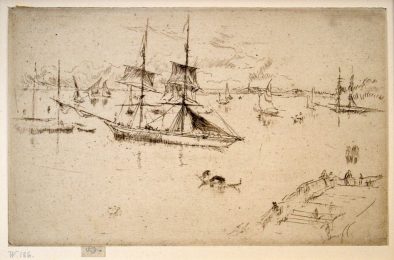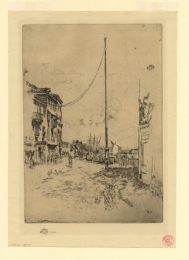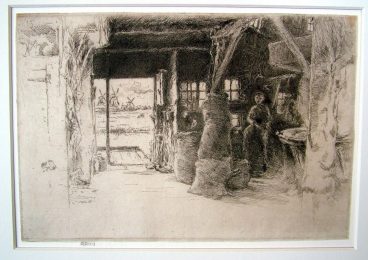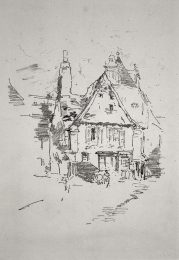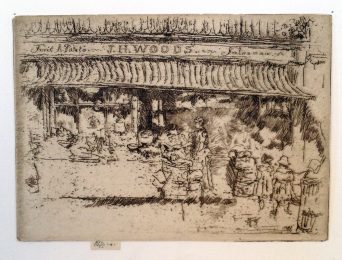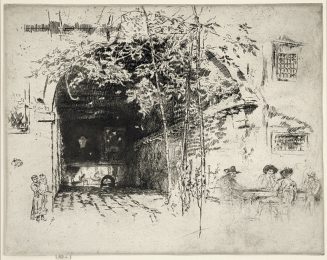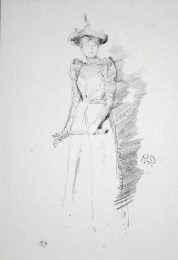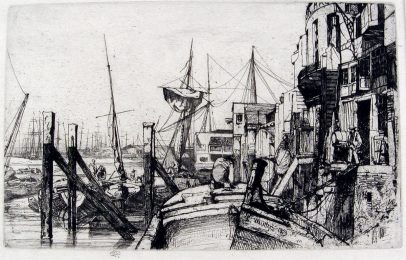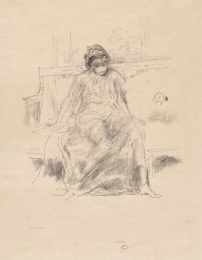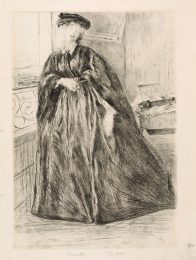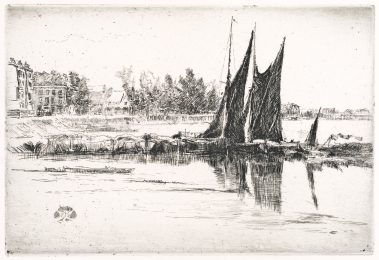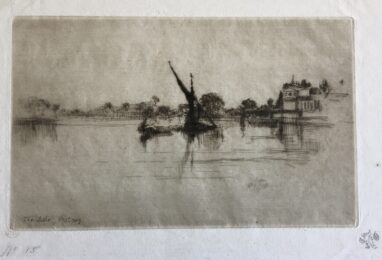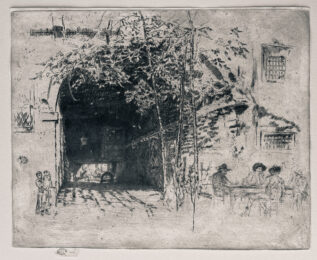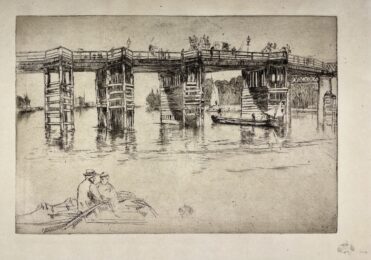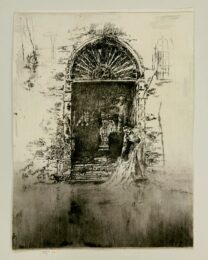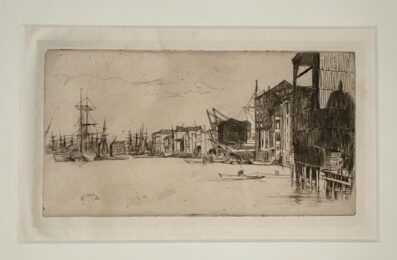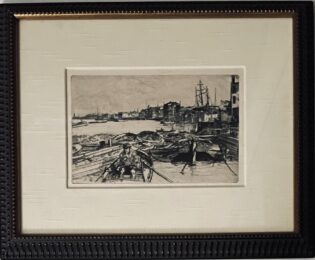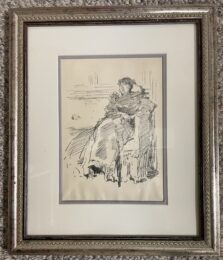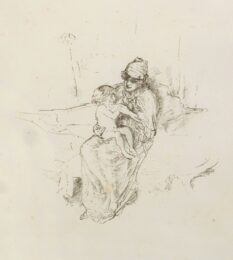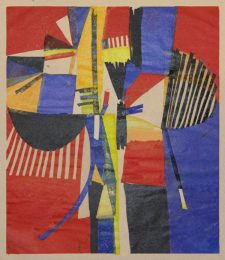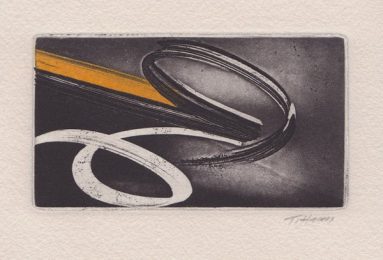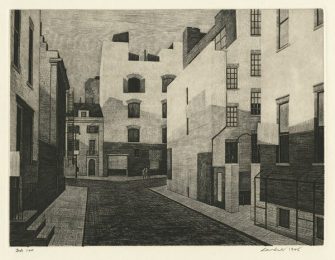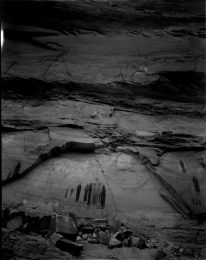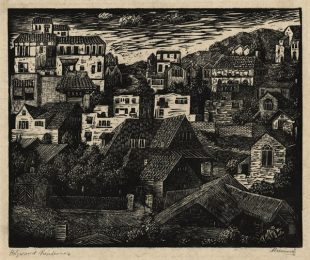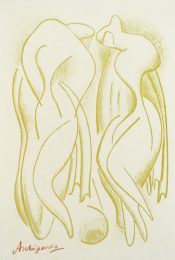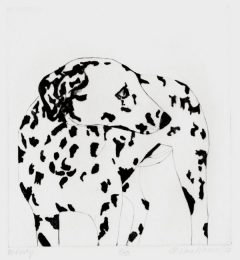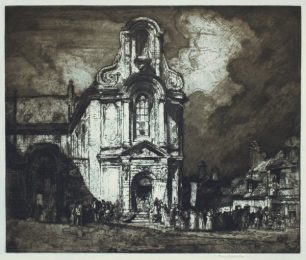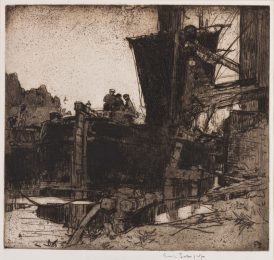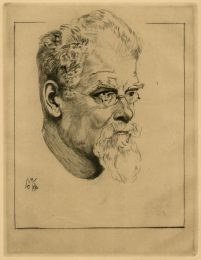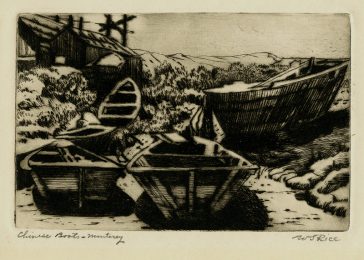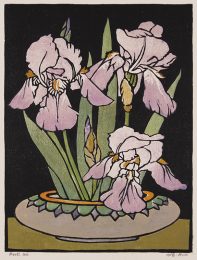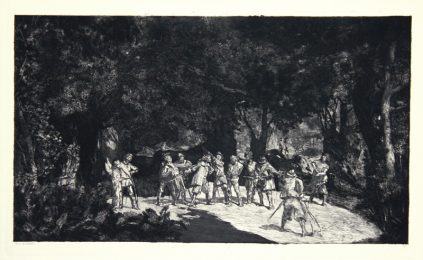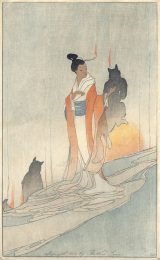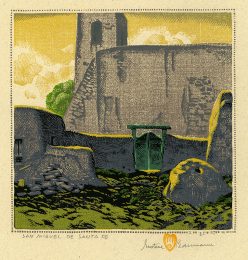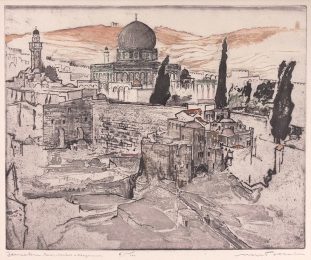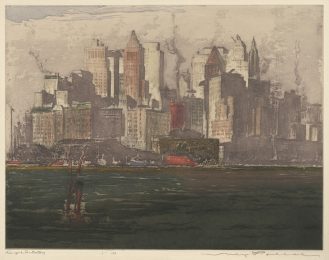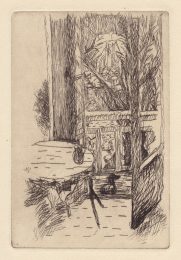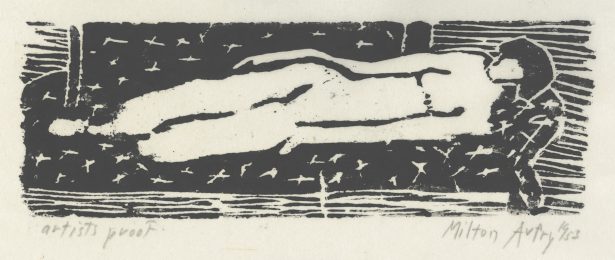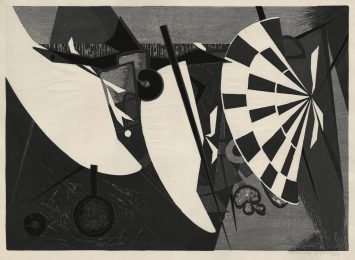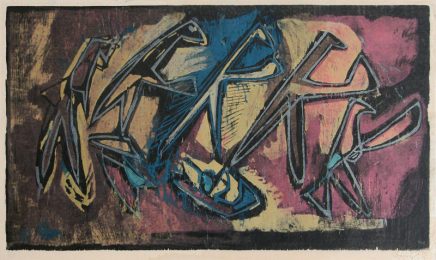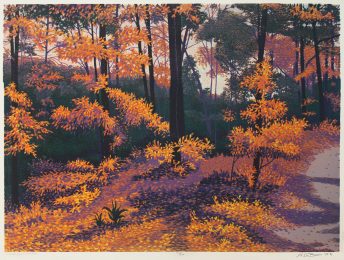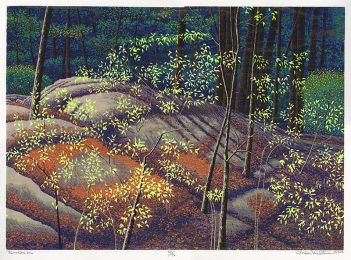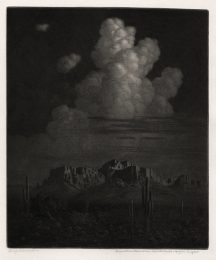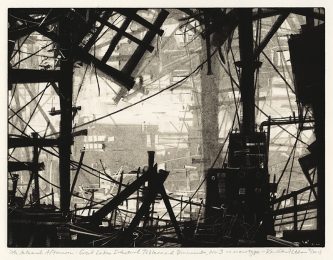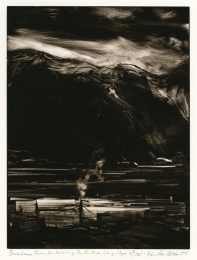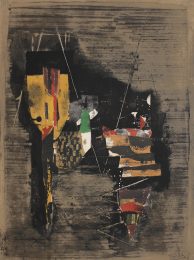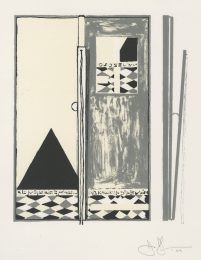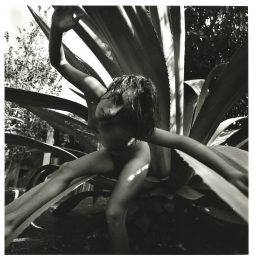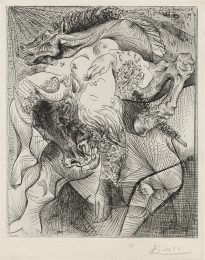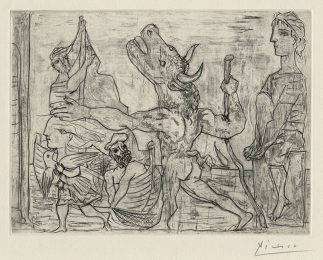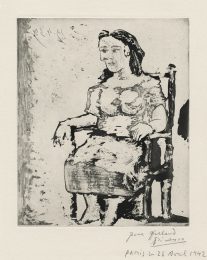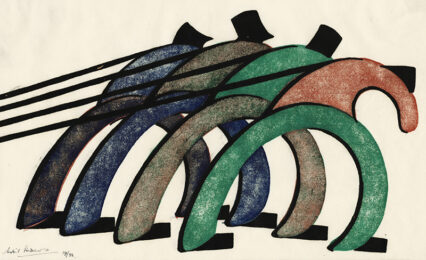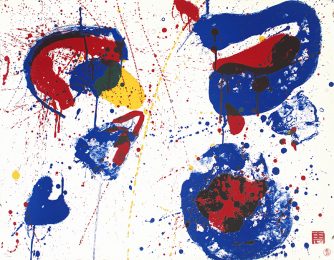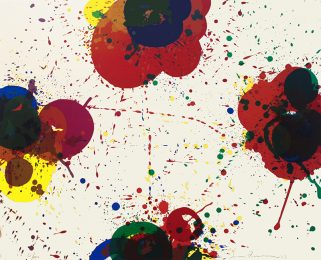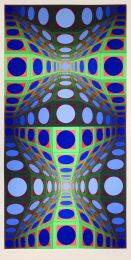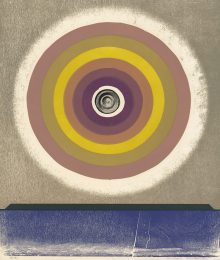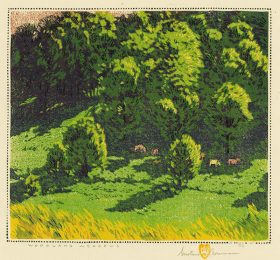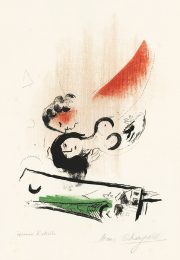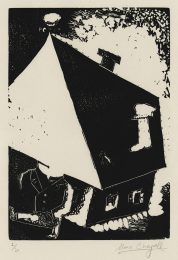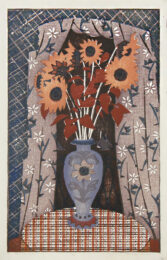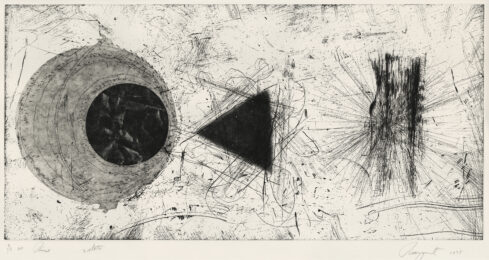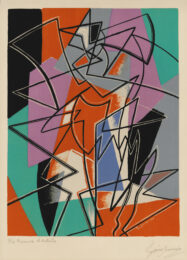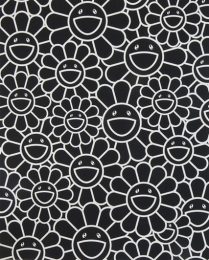Details — Click to read
A rare impression of this etching, in the third state of four, annotated with the pencil “butterfly” signature and “imp“, indicating that Whistler printed this impression himself.
The ‘Whistler Etchings Project‘ at the Univesity of Glasgow notes the following: “Whistler made over thirty etchings in 1859, including many scenes on and by the river Thames in London, such as Thames Warehouses [46], Old Westminster Bridge [47], Limehouse [48], Black Lion Wharf [54], The Pool [49], Eagle Wharf [50], Thames Police [53], W. Jones, Lime-Burner, Thames Street [55] and Billingsgate [51]…
It is most likely that it was drawn in an inn or public house, or in a local ‘ordinary’ (a cheap restaurant) in the Rotherhithe or Wapping area, where Whistler was working on the ‘Thames Set’ etchings. Rotherhithe [70] shows such a pub, the ‘Angel’ in Cherry Gardens, Rotherhithe.
‘[Whistler] stayed for months at Wapping, to be near his subjects, … Mr Ionides recalls long drives, down by the Tower and the London Docks to get to the place, as out of the way now as then. He says Whistler lived in a little inn, rather rough, frequented by skippers and bargees, close to Wapping steamboat pier….
“When his friends came,” Mr Armstrong writes us, “they dined at an ordinary there used to be (sic). People who had business at the wharves in the neighbourhood dined there, and Jimmie’s descriptions of the company were always humorous.” Mr Ionides drove down once for a dinner-party Whistler gave at his inn: “The landlord and several bargee guests were invited. Du Maurier was there also, and after dinner we had songs and sentiments. Jimmie proposed the landlord’s health – he felt flattered, but we were in fits of laughter.” ‘ ”
“Longshoreman” was printed in comparatively large numbers, considering that it was not published. Over forty impressions have been recorded. Impressions of the first and second states were printed in black ink on ivory ‘antique’ (pre-1800) laid paper. Most impressions of the third state were printed in black ink, on a variety of papers including buff; grey wove; and cream ‘modern’ (post-1800) laid; off-white laid; cream laid paper taken from a book. Quite a large proportion are on Asian papers, mostly cream Japanese and ivory Japan. Some of these impressions may have been printed and sold in the 1870s.
The final state was usually printed in black ink, again on a variety of papers. Some of these were probably printed in the 1890s or after Whistler’s death, possibly for the New York print dealer Frederick Keppel (1845-1912).

